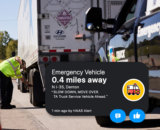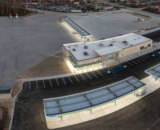Operators are turning to biodiesel to grow their business and increase margins, but the fuel often comes with questions. During a recent webinar, Grow Your Business with Biodiesel Blended Fuel, Jon Scharingson, executive director, sales and marketing for Renewable Energy Group, and David Fialkov, vice president of government relations at NATSO, shared their insight into the financial, performance and environmental benefits of biodiesel and provided answers to operators who are investigating biodiesel. (Watch a recording of the webinar here.)
Operators looking to learn more about biodiesel should consider attending NATSO's Food and Fuel Study Tour that will take place July 18-20 in Chicago. The tour will include a visit to an REG biodiesel plant and two truckstops that offer biodiesel on July 19. On July 20 operators will visit food service disruptors not in the truckstop industry.
“We’re going to do a deep dive on biodiesel blending economics, including talking about the value of RINs, how to trade RINs and what companies are out there to assist you,” Scharingson said.
The tour will also show biodiesel equipment and cover fuel specifications.
Here are five things operators wanted to know:
Q: What are the issues with putting B10 or B20 into an underground storage tank that has never had biodiesel?
A: Scharingson said operators that have a good tank maintenance program in place and regularly clean and inspect tanks shouldn’t have a problem putting B5 to B20 blends in an existing tank. “You’d likely want to clean your filters more frequently at first because the solvency properties of biodiesel are going to clean up some of that gunk that just formed over time,” he said.
Scharingson added that operators should start with a B5 blend for a few weeks before moving to a B15 or B20 blend. “The more biodiesel you have in there the quicker the solvency properties are going to take effect,” he said.
Q: Do above-ground, uninsulated tanks have issues with biodiesel?
A: Scharingson said it depends where the tank is located — travel centers in cold-weather climates should consider insulated or underground tanks — and how often operators are turning the tanks. If it is a concern, he suggested operators use a low-cloud-point biodiesel with an additive. “That would be a one-on-one conversation about your situation, but it is manageable,” he said.
Q: Is it necessary to have biocide additives to address bacteria and algae?
A: Scharingson told operators biodiesel doesn’t specifically require biocide additives, but biodiesel and water naturally adhere to each other. “When you have water present, that is when you see algae bloom,” he said, adding that when biodiesel is added to a tank that has water in it, a biocide is required.
Q: Is cloud point effected in a B5-B20 blend?
A. Scharingson said the cloud point can range from -1 to -2 degrees Celsius to 15 degrees Celsius depending on the feedstock being used. “It is strictly a function of math. If you start with a low-cloud-point biodiesel — say a 0-degree Celsius cloud point—and you’re mixing 5 percent biodiesel with 95 percent diesel, in that scenario it is a very modest — a 0.5- to 1- or 1.5-degree Fahrenheit increase in the overall cloud point of the fuel. As you use a higher cloud point biodiesel and go to higher blends, there is a bigger impact,” he said, adding that REG asks customers about the cloud point of the diesel fuel they’re starting with. “It is a matter of math, and it is easy to calculate.”
Q: What is the price difference between buying ULSD and B20?
A. Scharingson shared an example using diesel fuel and biodiesel prices in Iowa. “Our blended fuel prices tend to be a couple cents a gallon cheaper than our straight ULSD price at the rack basically demonstrating the fact that biodiesel has better economics than diesel fuel,” he said, adding that he can share more specific examples at specific locations if operators would like to contact him directly.
// Registration for the event is $1,000 for members and $1,500 for nonmembers. See the full schedule for NATSO's Food and Fuel Study Tour, which will be held July 18 - 20 in Chicago, here. For more information, contact Schulte at dschulte@natso.com or (915) 526-5820 with questions.
Photo credit: Darren Schulte/NATSO
Subscribe to Updates
NATSO provides a breadth of information created to strengthen travel plazas’ ability to meet the needs of the travelling public in an age of disruption. This includes knowledge filled blog posts, articles and publications. If you would like to receive a digest of blog post and articles directly in your inbox, please provide your name, email and the frequency of the updates you want to receive the email digest.


